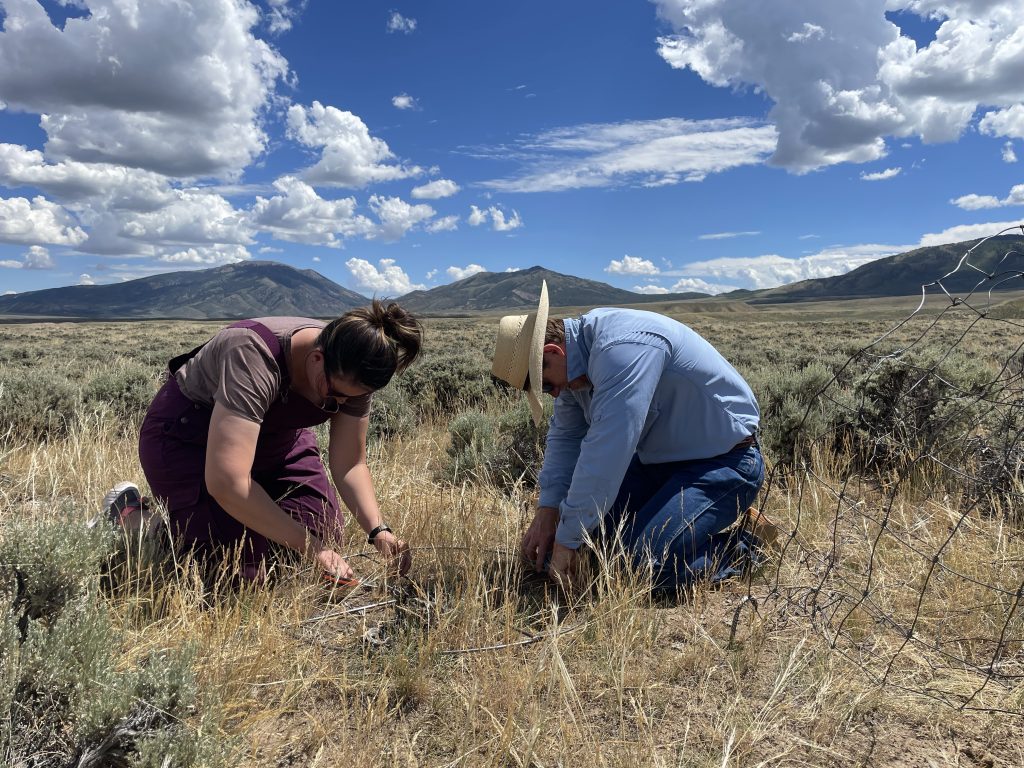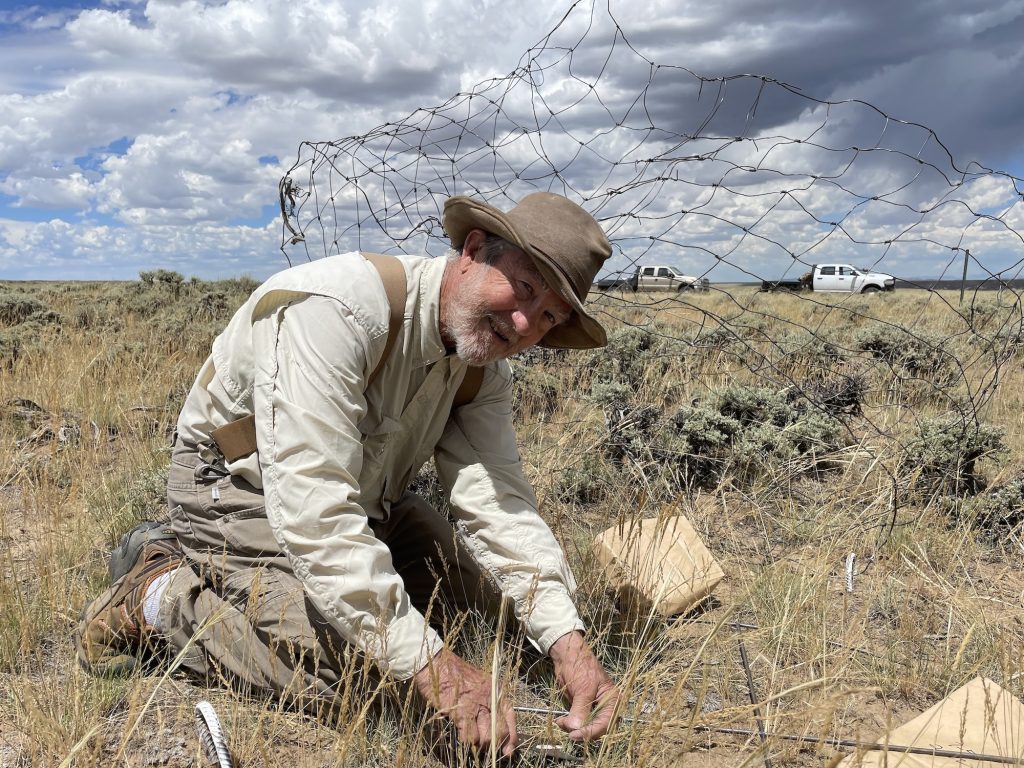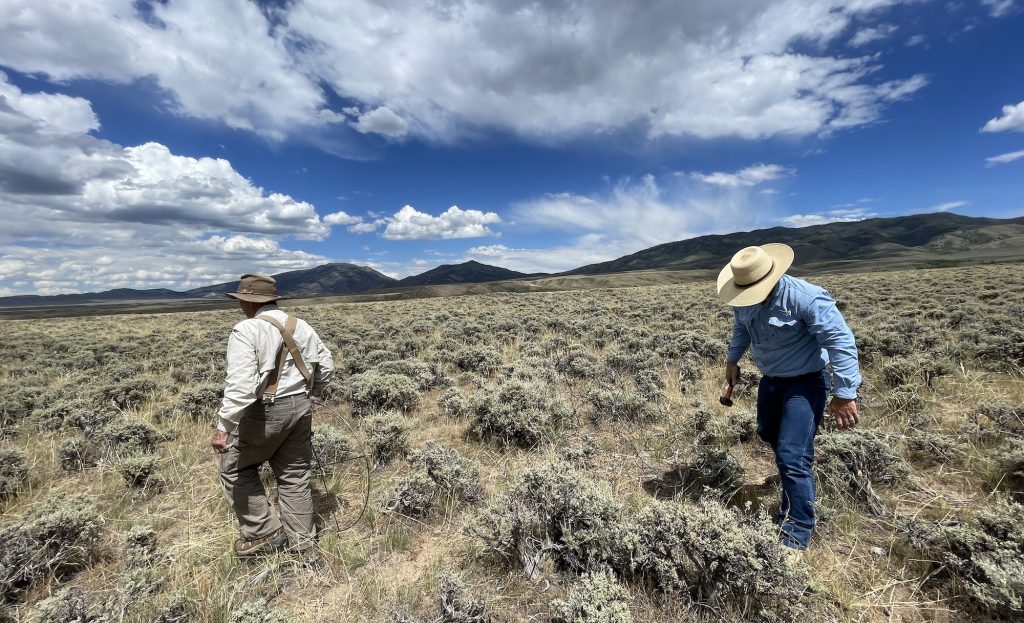It’s not easy to find the Mike Smith highway, even if you know what you’re looking for: a faint two-track meandering through several bumpy miles of sagebrush outside Saratoga, Wyoming.
That hasn’t stopped the route’s namesake—retired rangeland management specialist Mike Smith—from visiting this site annually for nearly 40 years. Every July since 1987, Smith has traversed this windswept stretch of rangeland to collect data for his longest-running research project.
Originally, his objective was to examine how sagebrush removal affected vegetation in the area. “But, in order to effectively do that, we collected a lot of other information, including information on annual precipitation,” he explains. Over time, the study has not only provided data on the economics of sagebrush treatment, but also on the relationship between annual precipitation and forage production, sagebrush regeneration, and more.

These days, data collection involves clipping vegetation from 12 of the original 42 plots established nearly 4 decades before. Every July, eight to ten volunteers from the University of Wyoming Extension, Saratoga-Encampment-Rawlins Conservation District, Wyoming Game and Fish Department, and Bureau of Land Management join Smith and his wife, Diane Fiedler, to clip vegetation samples.
On these occasions, Smith casually identifies tiny snippets of vegetative matter—wheatgrass, needle-and-thread grass, various forbs, and other plants—as he clips. Pausing to admire the landscape, he points out the looming forms of Sheep Mountain, Elk Mountain, Coad Mountain, and Pennock Mountain on the horizon. Meanwhile, Fieldler moves between pairs of volunteers, handing out carefully labeled paper bags to transport samples and circling back to share memories of past expeditions.
Clearly, Smith’s study is notable for its longevity. But at this point, it’s about more than just data collection—it’s also a celebration of decades of collaboration and service to the state.
“Everybody who works at UW College of Ag should do it—go out and clip with Mike,” says Brian Mealor, a UW graduate and director of the Sheridan Research and Extension Center. “He’s a Wyoming treasure.”
Clipping without a skip
Smith arrived at the University of Wyoming in 1978. Over the next four or five years, he recalls, he taught pretty much every course that the range department offered. In the following decades, he gravitated toward extension activities, working closely with federal agencies and grazing permittees to help resolve points of contention.
“You didn’t try to tell people how to do their business, but you made suggestions about what might work and then you could explain the ecology of the system to them,” he explains.
Somehow, Smith also found time to design a long-term study in a windswept patch of Carbon County rangeland. In the winter of 1986, one of his students set up 42 research plots with varying percentages of sagebrush cover; in the spring, the plots were sprayed with the herbicide 2, 4-D. “The first clipping was July ’87,” Smith recalls. “And every year since, without a skip.”
In addition to clipping, identifying, drying, and weighing vegetation samples, Smith and his students sometimes categorized the clipped vegetation into four groups as well: three classes of grasses, plus forbs. They also collected soil moisture and precipitation data.
In recent years, data collection has scaled back to clipping annual samples from 12 plots. These samples are dried and weighed to estimate forage production, then recorded in what Smith describes as “our big dataset”—which contains nearly four decades of information.
“A lot of research gets done short term,” says Derek Scasta, Smith’s successor as UW Extension rangeland management specialist. “More than three years is incredible—and in Saratoga, it’s been nearly forty!”

The economics of sagebrush treatment
At the beginning of the study, plots were categorized based on the percentage of sagebrush cover, which ranged from 4% to 40%. Smith’s goal was to observe how much forage production increased in each plot after the sagebrush was removed by the 2,4-D herbicide treatment.
“The primary objective of the original project was how much sagebrush is too much,” Smith explains. “In other words, how much sagebrush do you have to have before it becomes economical to remove it?”
In all the years since the initial 2,4-D application in 1987, the plots have not been treated again, chemically or otherwise. In general, Smith has found that “the less sagebrush there was to start with, the less response you get. And secondly, if you kill the sagebrush in some of those plots that didn’t have much in the first place, you may never get it back.”
In terms of forage production for cattle, his results suggest that when sagebrush cover is in the middle 20-percent range, treatment is likely economical.
Sagebrush regeneration
“The original ambition out here was to get rid of sagebrush and grow more grass for cows,” Smith notes. “But the better lesson to be learned here is what happens after you get rid of the sagebrush and what kind of habitat do you see when sagebrush returns.”
For example, he discovered that there’s a pretty good correlation between sagebrush regeneration and the amount of needle-and-thread grass or wheatgrass present.
Over the years, Smith observed that in plots with mostly wheatgrass, the sagebrush tended to grow back much more quickly. “If you look for an ecological explanation for that, you could hypothesize that needle-and-thread is a lot better at utilizing soil moisture at the expense of sagebrush, which makes it more competitive,” he says.
Forage production and precipitation
In recent years, the project has moved away from documenting the lingering effects of sagebrush removal nearly 40 years ago. Instead, the focus has shifted to analyzing the relationship between annual precipitation and forage production.
“The data that we’ve collected didn’t change any. But the way we were thinking about it and the kinds of analysis we did definitely changed,” Smith comments. “We weren’t really concerned early on about quantifying the relationship of forage production and precipitation, although that was always an implied component of the study.”
Scasta, who has served as UW Extension rangeland management specialist since Smith retired in 2014, has taken the UW lead on this portion of the project. “We look at the amount of biomass relative to precipitation,” he explains. “How much does it rain and how much does that influence forage production?”
Rather than collecting rain gauge data at each site, Scasta uses precipitation data collected by the BLM in nearby Saratoga and extrapolated from weather stations in the region. Still, even if the location is not exact, “we have over three decades of tracking that relationship,” he says.
He’s using this information to determine when in the spring ranchers can reasonably predict summer forage production based on precipitation levels. “The big thing we’re interested in now is what the trigger is for ranchers in terms of making decisions about ranch management—when in the spring should they make decisions?”
In addition to potential use in planning for drought conditions, the dataset has been useful for local ranchers making drought claims. “If they get in that scenario, they need third-party unbiased evidence,” Scasta explains. “That’s the other value of continuing the project.”

Passing the torch
In recent years, Scasta has taken on the responsibility of working with the Saratoga-Encampment-Rawlins Conservation District, Wyoming Game and Fish Department, Bureau of Land Management, and extension colleagues to ensure data collection continues.
While Scasta handles event coordination, Smith and Fiedler still attend the annual clipping trip each year. “Mike understands the academic institution, but he also understands all the issues out in the state,” Scasta says. “He’s a phenomenal resource and knows practically everybody in Wyoming. I learn so much every time we get in the truck.”
Scasta hopes to see the project hit the 40-year mark. “If it continues, it’ll be because of Derek and other people who are here,” Smith reflects. “But I’ll always come over and clip.”
July 18, 2024, will mark the 38th year of data collection. There’s not many scientists—in Wyoming or otherwise—who can claim that kind of legacy.




